Germany continues to develop the LVS NNbS air defense system
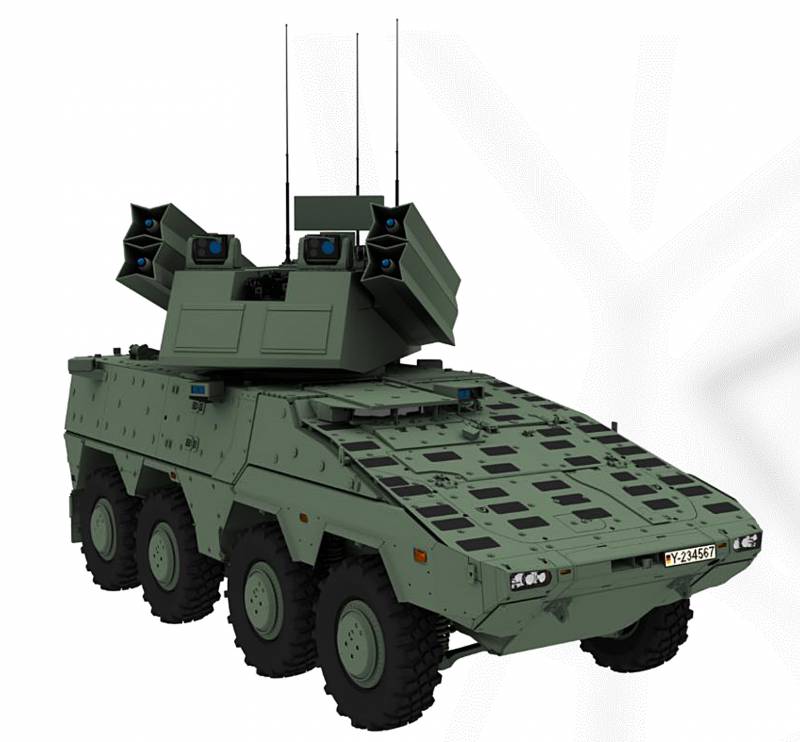
The design appearance of the FlaRakPz air defense system from the future LVS NNbS system
A few years ago, the German armed forces launched the LVS NNbS program, the purpose of which is to re-equip air defense units. Within the framework of this program, it is planned to purchase existing models of weapons and equipment, as well as create new ones. To date, the Bundeswehr has placed several orders for the production and development of the products it needs.
Big plans
The Luftverteidigung durch das Luftverteidigungssystem Nah- und Nächstbereichsschutz (“Short-Range and Short-Range Air Defense”) or LVS NNbS program started in 2017. The program was designed for a long time - its first results were expected only in the mid-twenties.
The implementation of the program as a whole and the development of individual projects was entrusted to a specially created working group Arbeitsgemeinschaft (ARGE) LVS NNbS. It included the companies Rheinmetall Electronics, Diehl Defense and Hensoldt Sensors, which have extensive experience in creating military equipment and air defense systems.
For several years, ARGE LVS NNbS and the relevant organizations of the Bundeswehr carried out preliminary studies and formed a plan for future work. The finished document was submitted only in March 2021. According to it, the program was divided into three main stages with different goals. During each of them it was supposed to develop and put into service new types of equipment.
The first stage, designated as Teilprojekt 1, involved the creation and / or purchase of existing or promising new missile and artillery systems to create an "initial air defense potential." Already in 2021-22. The Bundeswehr and ARGE LVS NNbS were to conclude the first contracts for such work.
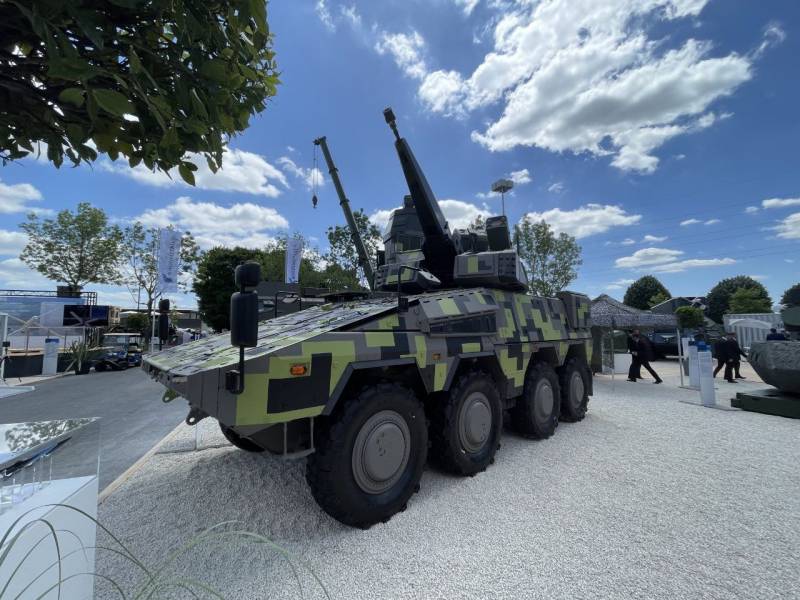
Full-size layout of Skyranger 30 ZSU for LVS NNbS
In parallel, within the framework of Teilprojekt 2, they planned to develop a promising laser air defense system. However, in 2021, the ground forces abandoned such a project and removed it from the LVS NNbS program. At the same time, the preliminary developments did not disappear - the German Navy became interested in them.
Not earlier than 2026-27 the third phase of the program will begin. Its goal is to develop the next generation of air defense systems and a new stage in the rearmament of army units and subunits. Unlike Teilprojekt 1, this time we are talking only about complexes created already within the framework of LVS NNbS. Such a re-equipment of the army can last until the early thirties.
Contracts and projects
According to the LVS NNbS program plan, no later than 2022, the first contract for the construction and supply of anti-aircraft weapons from Teilprojekt 1 should have appeared. The development of a completely new air defense system takes a lot of time, and therefore it was first decided to purchase one of the existing samples with the required level of performance.
Back in 2021, the Bundeswehr and ARGE LVS NNbS announced that the “initial anti-aircraft potential” under the new program would be created using the IRIS-T SLM air defense system. Such complexes are already mass-produced and can be delivered to the customer within a reasonable time. In addition, they wanted to save on missiles: it was proposed to equip ground-based air defense systems with IRIS-T missiles, which are in service with the Air Force and have developed a resource for operation on aircraft.
The contract for the supply of IRIS-T SLM was signed in June 2023. Diehl Defense and related companies will manufacture six such complexes with a total value of 900 million euros. Products will begin to enter service in 2024.
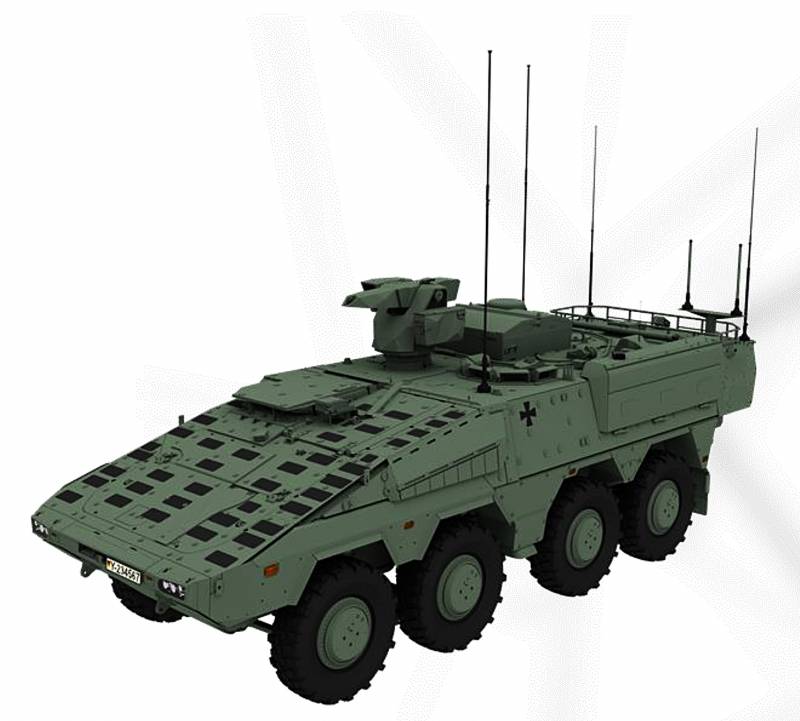
FltPz control machine
As part of stage 1, it is planned not only to purchase finished equipment, but also to create new models. Preliminary work in this direction has been carried out in the recent past. So, back in 2021-22. the ARGE LVS NNbS group showed mockups of new combat and auxiliary vehicles.
On August 24, 2023, the NNbS LVS working group announced that it had received the corresponding order. In the near future, the contract will go through the remaining bureaucratic procedures, and its execution will begin. The cost and other features of the agreement are not yet known.
In accordance with the new contract, the LVS NNbS consortium will have to develop three models of equipment for military air defense of the near zone at once. These are the Flugabwehrraketenpanzer (FlaRakPz) self-propelled missile system, the Flugabwehrkanonenpanzer Skyranger 30 artillery mount and the Feuerleitpanzer (FltPz) control vehicle.
All three projects need to be developed over the next few years. In 2025-26 the appearance of the first experimental ZSU with artillery weapons is expected; later, the air defense system will be tested. They want to complete the entire set of tests no later than 2026-27. For 2027-28 the start of production and supply of finished equipment to the troops is planned. Whether it will be possible to meet such deadlines is unclear.
Unified family
Thus, within the framework of the first stage of the LVS NNbS program, it is planned to purchase four types of equipment. First of all, an additional number of IRIS-T air defense systems in the SLM modification will go into service. These products, their characteristics and capabilities are well known. With the help of such a complex, the Bundeswehr plans to hit air targets at ranges up to 40 km and altitudes up to 20 km.
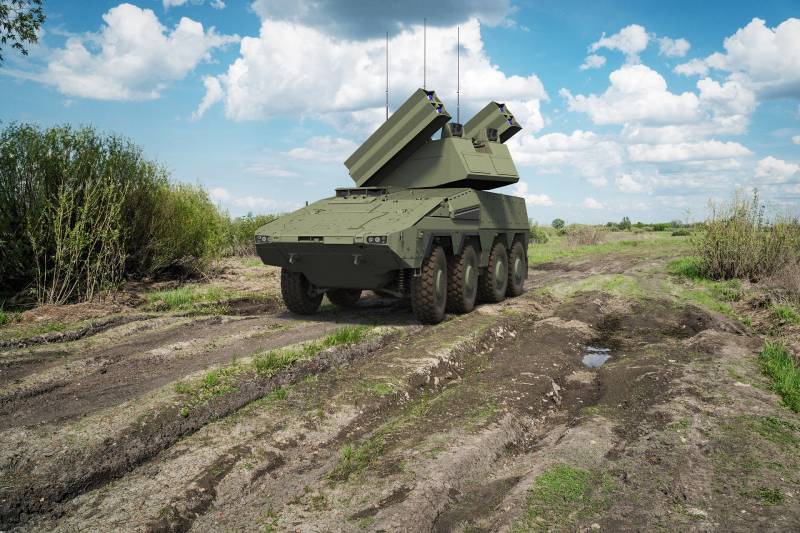
The greatest interest in the LVS NNbS program is the newly developed equipment - air defense systems, anti-aircraft guns and a command post. These machines will be made on a Boxer wheeled chassis, which will simplify their operation in parts of the Bundeswehr. Combat modules and other equipment of the required composition will be mounted on the chassis. It is planned to install a system of additional protection MUSS. All new vehicles will be integrated into the IBMS automated troop control system developed by Airbus and will receive Link 16 standard communications.
For the FlaRakPz missile system, an original combat module is being developed in the form of a tower with weapons and electronic equipment. Such a module will receive a Hensoldt Spexer radar with six small-sized AFARs for viewing large sectors, an optoelectronic system and other devices. On the sides of the tower there are four containers for early modification IRIS-T missiles with a launch range of 15 km. For self-defense, the complex will receive a 40-mm automatic grenade launcher.
The Flugabwehrkanonenpanzer ZSU is proposed to be equipped with the existing Skyranger 30 combat module from Rheinmetall Air Defense. It is an uninhabited turret with a 30mm Oerlikon KCE automatic cannon capable of firing conventional and programmable projectiles. The module is equipped with all the necessary radio and optical means. The possibility of supplementing the gun with several short-range missiles was mentioned.
The FltPz control vehicle will look like a standard Boxer armored personnel carrier. All its characteristic differences will be hidden under the armor. The mobile command post will receive all the necessary instruments for exchanging data with a higher commander or within the unit, as well as for receiving information from third-party reconnaissance equipment. According to known data, the FltPz machine is primarily designed to control the FlaRakPz air defense system. One FltPz command vehicle will serve three self-propelled systems.
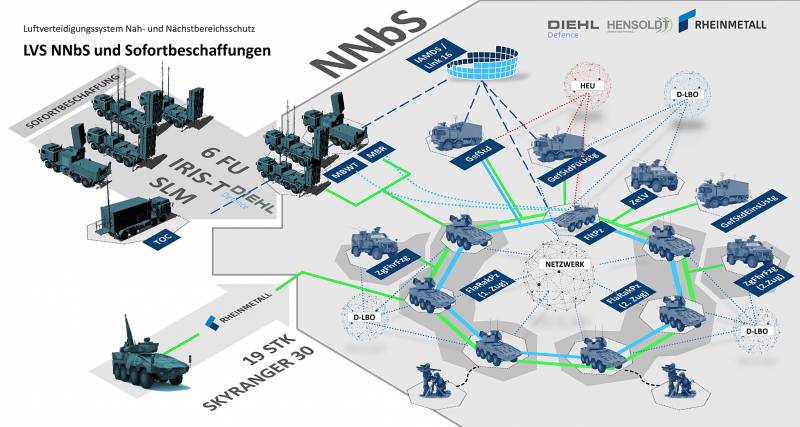
Joint operation of various air defense systems, including the LVS NNbS system
New look for air defense
It is assumed that anti-aircraft systems from the LVS NNbS system will be able to provide air defense for fairly large areas and facilities or troops in them. At the same time, self-propelled execution of new models will give certain advantages of an operational and operational nature.
Working as part of a unified air defense system, new products will have to find and hit a wide range of various air targets at ranges up to 40 km and altitudes up to 20 km. The “long-range interception” in such a system will be IRIS-T SLM complexes equipped with the appropriate radar and missile. The next line of defense will be built on the basis of the FlaRakPz self-propelled complex with a firing range of up to 15 km, and the defense of the near zone will be entrusted with ZSU with a 30-mm cannon.
It is assumed that such an air defense system will be able to deal with all relevant and promising air targets, showing the necessary flexibility. So, airplanes, large cruise missiles, etc. it is proposed to hit with an anti-aircraft missile. To combat small UAVs and other similar objects, a self-propelled cannon is introduced into the system. At the same time, the LVS NNbS system will be able to work together with other air defense systems, exchange data with them, etc.
Big plans
Thus, the promising program for the rearmament of the air defense of the Bundeswehr is gradually moving forward and going through the necessary stages. To date, plans have been formed and preliminary designs have been completed, as well as contracts for further work.
Over the next few years, the ARGE LVS NNbS working group will supply the already ordered air defense systems, as well as develop new models of equipment for subsequent tests. By the end of the decade, work on the Teilprojekt 3 topic is expected to be launched. What results the LVS NNbS program will eventually show is still unknown. However, the customer and contractor are very optimistic.
Information